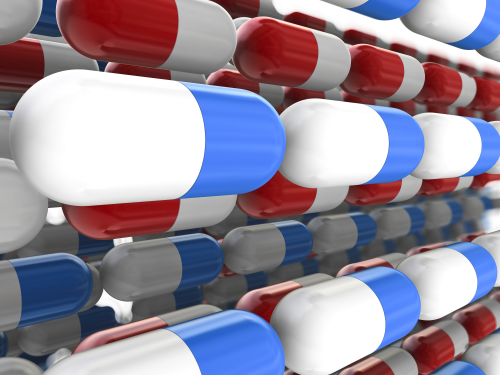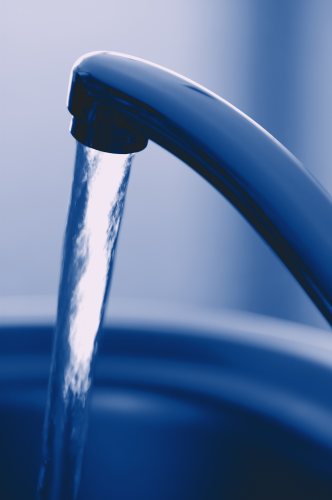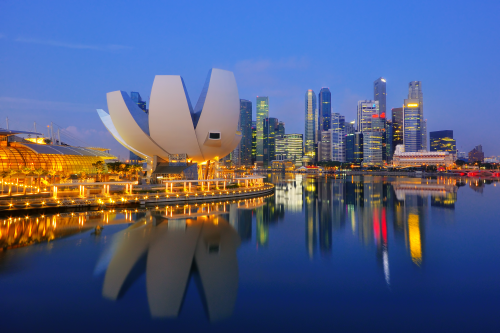





The production of clean water for drinking and general domestic purposes, or of pure water for a range of industrial applications, is one of the largest users of filtration equipment in the whole separation context. It is also one that is growing rapidly to meet its customers’ demands for a higher quality product at all levels of production, from the local village pump to the washing of semi-conductor materials.
The specific filtration equipment is needed for three prime purposes, which are:
• the conventional purification of raw water, drawn from surface and underground sources, to provide a safe drinking quality;
• the further treatment of potable water supplies for use in specific industrial applications; and
• the treatment of unconventional sources of water so as to increase the quantity of fresh water that is available. These unconventional sources include the desalination of salt and brackish waters, the collection and recycle of rain water and of grey water from residential premises, and, as public conceptions change to accept it, the recycling of municipal waste waters.
The purification processes that are used to achieve the required reduction in contaminant levels are a mix of traditional schemes, which have been steadily improved over the years, and novel systems that are quite exciting developments. (It must not be forgotten that the mechanical separations are frequently allied with biological processes, but the latter are more common in the waste treatment systems than in fresh water processing.)
Water resources
The water available to mankind seems, at first sight, to be inexhaustible, but this is far from the case. Most of the world’s water (97.5% of it) is contained in the oceans, in a salty and undrinkable state, leaving only one-fortieth of the total global stock of water as fresh and nominally available for drinking. Even this is not without restriction, since most of it (almost 70%) is unavailable, because it is firmly frozen, as glaciers, or in the polar icecaps, or in the ground as permafrost. Of the residual, mobile water, over 30% is held in subterranean aquifers as ground water, and only 0.4% is left on the surface of the land as lakes and rivers, or evaporated into the atmosphere. The world’s groundwater comes from the 30.1% that is in slow movement through the earth’s crust (with some of the more easily accessed aquifers now running dry), and all of its surface water must be taken from the tiny amount (0.36%) that is actually moving over the ground, as part of the hydrological cycle (with 0.04% evaporated, to fall, eventually, as rain).
Demand for water is increasing as the world’s population grows, and also as the existing populations in the developing countries increase their standards of living and with it their specific water consumption. The required standards of drinking water production and care are rising continuously, partly because the consumer’s perception of received water quality is slowly changing so as no longer being willing to accept what was once acceptable - in terms of taste, odour, colour and turbidity.
Bulk water treatment
The first of the treatment applications listed at the start of this article, namely the conventional treatment of raw waters, is characterised by reasonably large flow rates, necessitating high capacity filters. It deals with a liquid feed that is relatively low in suspended solid content or the presence of other contaminants, so that it will need treatment by a clarification process rather than the often more complex solids recovery operation. The system parameters will all be relatively mild: a liquid no more corrosive than aerated water; liquid viscosities and densities close to that of pure water; and temperatures mainly close to ambient.
On the other hand, this application is fairly demanding in terms of the quality of the product water – the concentration of residual contaminant solids and their maximum particle size, or concentration of dissolved material.
Filtration processes involved
The objective of the filtration processes used in water treatment is mainly to achieve the separation of solid particles that are suspended in the water to the extent, perhaps, of 0.5% by weight or as little as 10 mg/l (10 ppm), by removing particles that are as large as grit or sand (say 1mm in diameter or more) or as small as colloidal organic materials, or pathogens such as bacteria or viruses (say 0.1 µm or less).
In addition to this primary purpose, the filtration system may need to address the removal of oil droplets from suspension in the feed water, or the removal of the colloidal or large dissolved organic molecules that are usually responsible for unpleasant tastes or odours or colour in the water, or the removal of the large dissolved ions from inorganic salts responsible for causing hardness in the water, or, finally, the removal of the smaller ions causing salinity (or, more correctly in this case, the removal of pure water from residual brine).
Filtration equipment
The types of equipment used to achieve these separations are relatively few in broad classes, although extremely varied in physical embodiment. These broad classes are:
• for suspended solids separation: screens and strainers; deep bed filters (simple or multi-layer); cartridge filters (for macro- and microfiltration); microfiltration membranes
• for oil droplet separation: coalescing filters (mainly for waste water treatment)
• for dissolved material removal: ultrafiltration membranes
The deep bed filter is probably most important in terms of volumes of water filtered, whereas the membranes are the vital component for final product purity.
Screens and strainers
The coarsest water filtration is undertaken by strainers, either the in-line or larger units. The in-line units can often be blown clear of collected solids (otherwise having to be dismantled for cleaning), while the larger ones run continuously, with collected solids washed or scraped off the collecting surface. The filtration medium is usually a perforated metal plate or piece of wire mesh, in the form of a cylinder for the in-line units, or a large plate or wire screen for the continuous strainers. The screening component of a treatment works is, these days, often completed by a microstrainer.
Deep bed filters
Among the most widely used filters for clarifying high flows of water entering treatment works is the deep bed (or sand) filter. This has a relatively deep bed (of the order of 1 m deep) of granular material as its filter medium, with the feed flowing through the full depth of the material. The deep bed filter has been the basic means of treating fresh water to render it safe to drink for over 100 years.
The gravity filter exists in two main types: the slow filter, characterised by a low water flow rate and a finer grade of granular material, and the rapid filter, with water flow rates 5-7 times higher, and using a coarser material. The slow sand filter works by a straining action, achieved by a shallow layer of organic material on the top of the bed, which contains bacterial matter and which adds a biological destruction function to its screening action. By contrast, the rapid sand filter aims for a truly deep bed action, with contaminant solids adsorbed onto the bed material for most of its depth. Both are capable of giving treated water that is free of solid particles above 0.5 μm, from raw water as high as 50 mg/l in solids concentration (or even 500 mg/l).
The modern, multimedia, version of the rapid filter uses two or more different materials of markedly different density as well as different sizes. Materials such as anthracite, sand and garnet are graded such that the lightest (anthracite) has the coarsest grains and the densest (garnet) the finest. Then in the resettling stage, after bed expansion to wash out collected solids, the density factor is greater than the size factor, and the finer particles sink to the bottom. A downwards flow of raw water then reaches the coarsest layer first, as it should. A version of this design is the Spruce filter, which has four layers of different solids, the bottom one, magnetite, being positively charged. An effluent quality of 3 mg/l and less than 0.2 µm is claimed. Other modern versions of the rapid filter are the pressurised bed, and the moving bed, which allows continuous operation, by having the bed of sand or other materials move downwards through the filter. The dirty solids are carried from the base of the bed by a jet of air to a wash zone above the filter, to be washed clean of trapped solids and then returned to the top of the bed in the filter.
Cartridge filters
The cartridge filter, which can be thought of as a very fine strainer or as a coarse microfilter, uses a replaceable filter element, generally cylindrical in shape and long with respect to its diameter, which operates by filtering a fluid from the outside of the cartridge to its inside. It normally comprises a central open-structured core, on which is placed the filter medium, and is contained in a cylindrical housing. The medium is most likely to be either a pleated sheet, to maximise the filtration area, or a thicker layer of bonded granules or fibres for depth filtration applications.
Individually, the cartridge filter has a relatively low liquid capacity, and it would need to be used in multiple-unit batteries to reach the kinds of flow rates involved in raw water filtration. However they can be fitted with a wide range of filter media, and so can be selected to match almost any filtration task. Media are now available to take the cartridge into microfiltration uses.
Like the strainer, the cartridge filter can be set up in duplex format (two cartridges in parallel) and provided with an automatic cleaning mechanism, whereby one unit is cleaned (by backflushing or scraping) whilst the other is on-line and filtering.
Microfiltration membranes
An important modern development in terms of filter media has been that of the microfiltration membrane, with an open structure enabling operation at relatively low transmembrane pressures. These are available with cut points down to 0.1 µm or below, thus enabling use for removing pathogenic species from drinking water (and for use in the submerged membrane bioreactor, mainly for waste water treatment, but increasingly for fresh water polishing).
As with the cartridge filter, unit capacities may be low, requiring their use in arrays of modules, but the MF membrane is becoming a very valuable tool in most kinds of water filtration. The membranes are used in any of the standard formats: flat plate, hollow fibre, tubular and spiral wound.
As far as water treatment is concerned, the ultrafiltration membrane has come to be a very important component of the process scheme (a regular feature of journals devoted to water is now an article about, or a photograph of, ‘the largest UF plant in the world’ – which gets larger with each issue.) The UF process can be relied upon to remove the last traces of dissolved organic materials, and a considerable amount of any residual pathogenic material. It may be the solution also to the unwanted presence of pharmaceutical residues, such as hormone intermediates.
Industrial process water
Large quantities of drinking quality water are used in industry, but it is also true that specialised water needs exist, which require purification to higher standards of purity, whether for use as an ingredient (for example, in foodstuffs and beverages, or in pharmaceutical preparations), or as a washing liquid (for example, in semiconductors). The additional purification usually involves the removal of very fine solids or of pathogens (bacteria and viruses).
The arrival on the filter media scene of MF and UF membranes, and their steady reduction in cost, have revolutionised industrial process water treatment, and have gone a considerable way towards enabling disinfection of solutions by filtration. Most production processes for industrial process water now employ membranes as their final treatment stage. They are also opening up the processes for the recycling of process water (which has often, because of its careful treatment and dosing, been turned into an expensive fluid, well justifying its collection and recycling).
The membranes used for reverse osmosis, nanofiltration and much ultrafiltration work by diffusion of the relatively pure liquid through the body of the membrane material, under quite high applied pressures. Reverse osmosis has become a key process in the desalination of salty water to produce drinking water. Ultrafiltration is becoming a key preliminary stage for reverse osmosis, but also an important water purification stage in its own right, giving guaranteed purity to drinking and process waters.
Challenges
Water is a global commodity, so that it is no surprise that some of the challenges facing the provision of water of improved quality are global in their magnitude. The first challenge is probably that of getting water of adequate quality – a good drinkable quality, rather than pharmaceutical standard – to a much higher proportion of the world’s population. This especially means providing small-scale treatment plants, with a large filtration content, but not too advanced in technology and control terms, and distributing them as widely as possible throughout impoverished regions of the world.
The same kind of simple plant can then be made available for installation at points-of-use (for example, kitchen taps) for rapid distribution throughout disaster zones – natural or man-made.
The range of membranes now available enables these kinds of small-scale units to be produced, but another challenge is to make them cheaply enough for the potential user to want to get one – rather than wait for emergency aid to provide one.
The need for economical plants is essentially combined with economy in operation, which requires energy efficiency in the filter, so another challenge is the creation of filters with today’s levels of efficiency, but with significantly lower pressure drops. Some success is now being achieved by filter and media makers in these aspects of scale and cost.
Of growing concern are the trace impurities in raw water that are passing through a treatment works into the product water, such as soluble lead, and hormone residues. Lead content is required to be decreased in Europe from December 2013, and this looks likely to need a filter to achieve it.
One of the most severe problems in some parts of the world is simply that there is not enough water falling on them as rain or entering them as rivers. Singapore has set up a series of plans to deal with its small size and large population, which involve unconventional water sources. Desalinated water is one solution, which currently meets 10% of the country’s water needs, and is expected to meet 30% by 2060 (by which time total water demand will have doubled). More surprising is the recycling and re-use of wastewater (aptly termed NEWater), which is now meeting 30% of the national needs, and is forecast to meet 50% of the 2060 requirements.
Although Singapore is relying quite heavily on desalination, this is regarded, because of its cost, as the last resort, to be called upon only after water conservation measures are deployed, and the maximum amount of wastewater is being recycled.
As Singapore still considers desalination to be expensive, another challenge could well be to reduce to cost of membrane process desalination. An interesting response to this problem is the development (by the National University of Singapore) of Forward Osmosis, which does away with the high operating pressures of RO, instead using an intermediate ‘draw solution’. This highly concentrated solution pulls water out of seawater through a membrane, by means of osmotic pressure. The draw solution is then treated to release the water, and is finally reconstituted for re-use.





